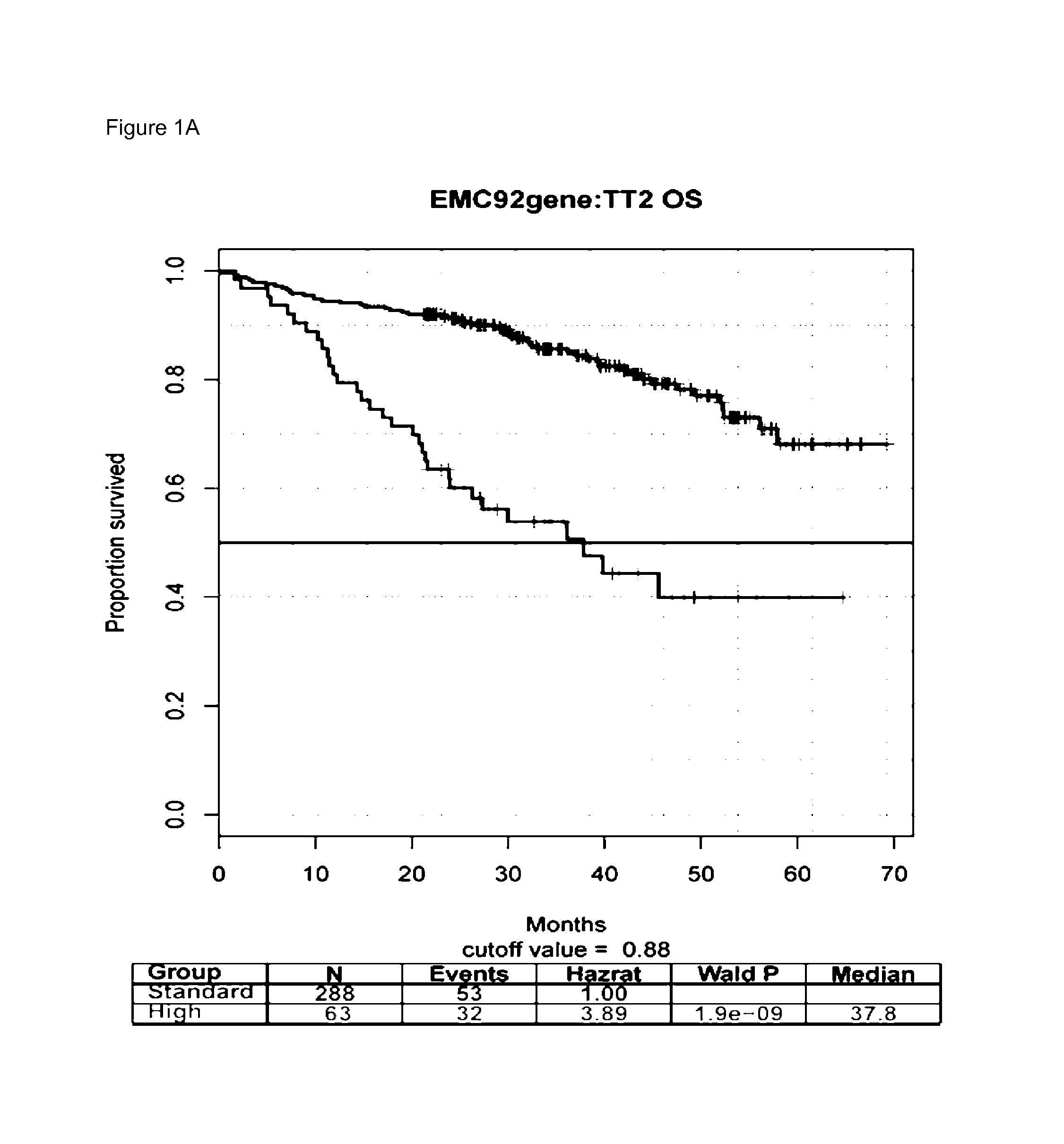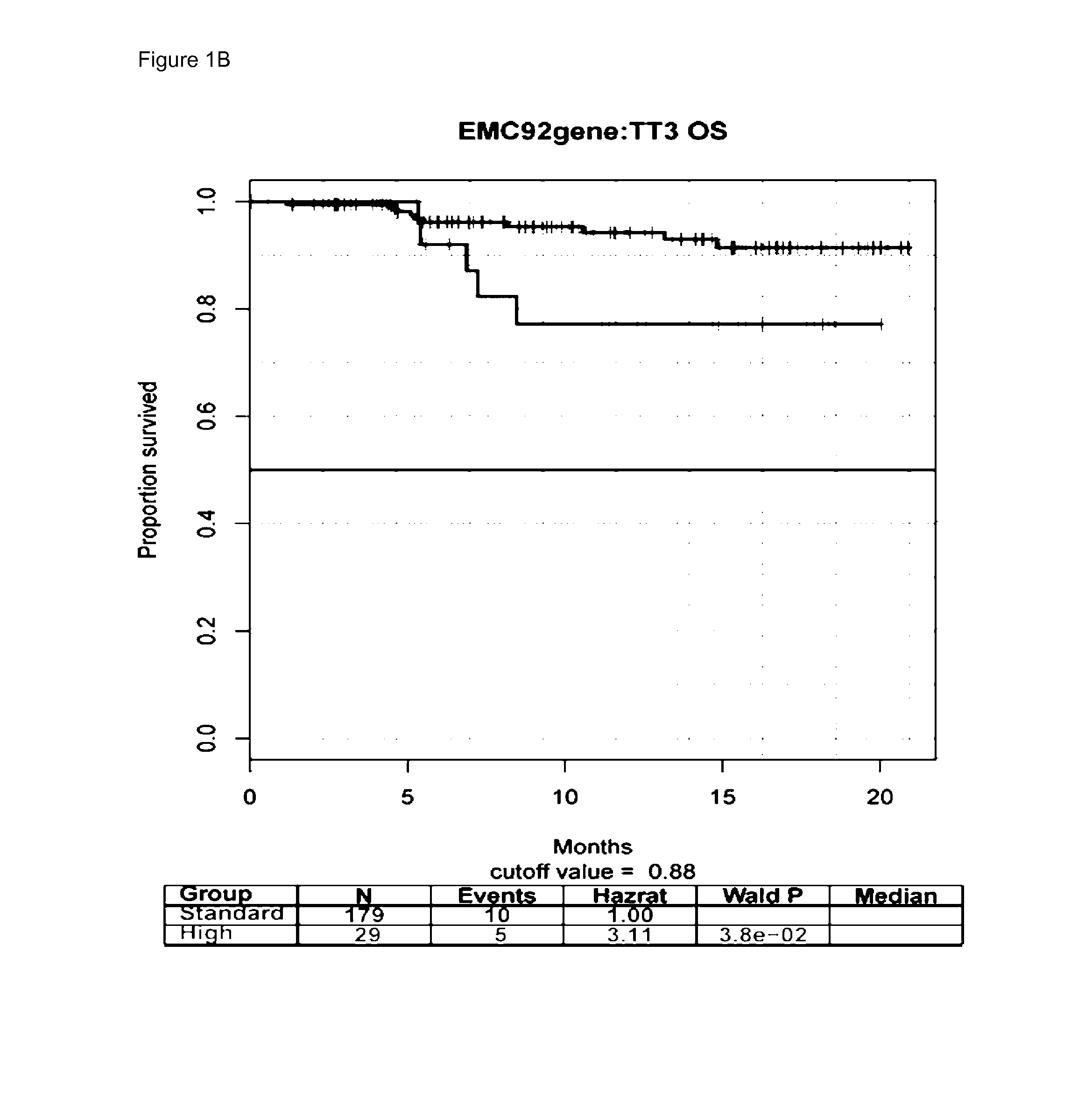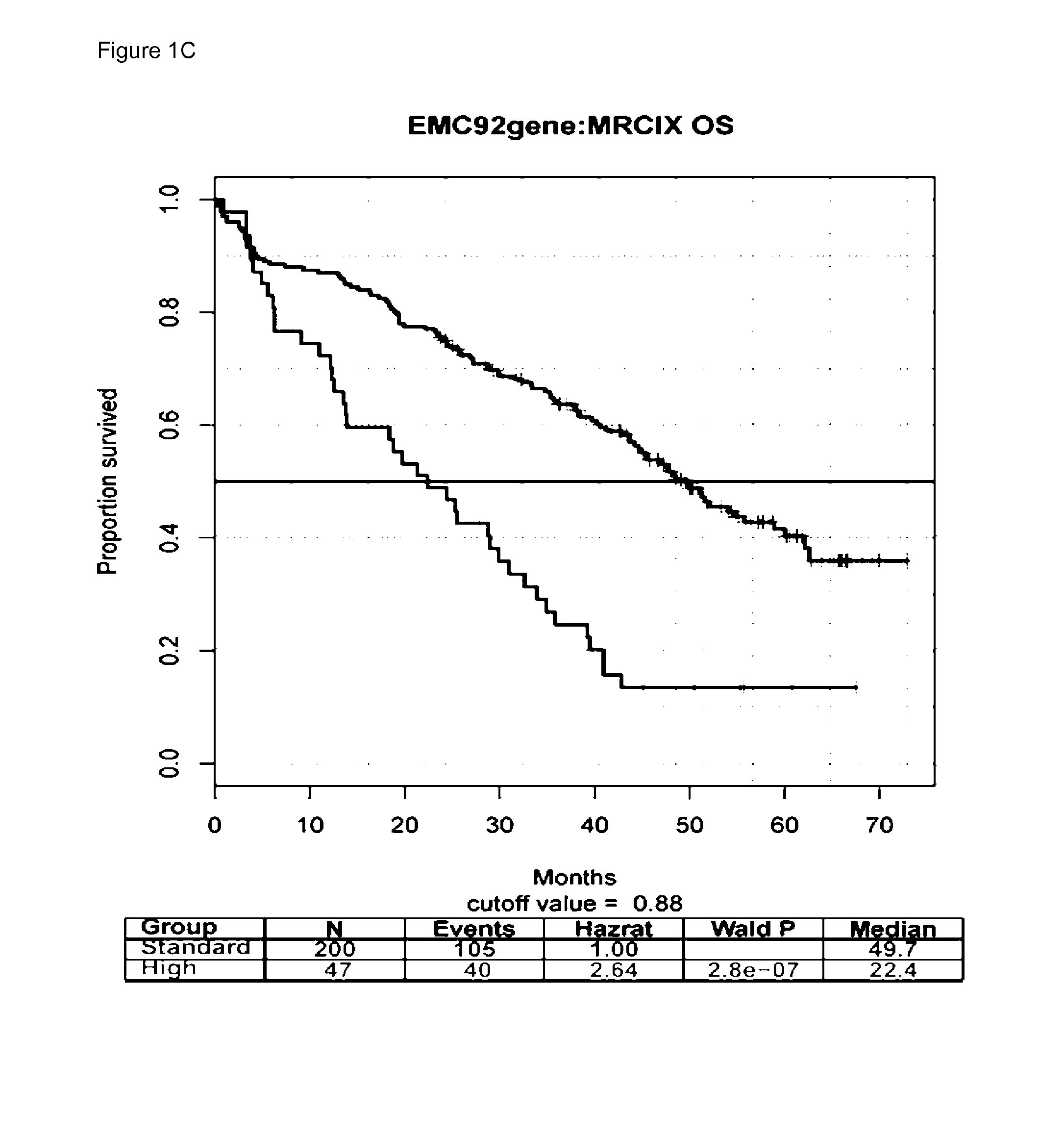A new classifier for the molecular classification of multiple myeloma
a molecular classification and multiple myeloma technology, applied in the field of new classifiers for the molecular classification of multiple myeloma, can solve the problems of poor prognosis and correlation of karyotyping, and achieve the effect of good overall survival and worse overall survival rates
- Summary
- Abstract
- Description
- Claims
- Application Information
AI Technical Summary
Benefits of technology
Problems solved by technology
Method used
Image
Examples
example 1
Patients
[0054]Five previously described datasets were used, of which both survival as well as GEPs of purified plasma cells obtained from bone marrow aspirates of myeloma patients, were available. These are HOVON65 / GMMG-HD4 (N=320)(GSE19784) [9], Total Therapy 2 (TT2)(n=351) [11], TT3 (n=208)(GSE2658) [11], MRC-IX (n=247)(GSE15695) [14], and APEX (n=264)(GSE9782) [12].
[0055]The HOVON65 / GMMG-HD4 data was used as a training set. This multicenter trial compared the efficacy of bortezomib (PAD) to standard treatment (VAD) in newly diagnosed patients. Patients were randomized to induction treatment with three VAD or PAD cycles [16] For a total of 290 patients both follow-up and GEPs were available [9].
[0056]The other four independent datasets were used as validation. Two datasets, TT2 and TT3, were derived from clinical trials performed in newly diagnosed patients both treated with a complex regimen. The first was a randomized prospective treatment trial in which patients were randomly a...
example 2
[0059]Two types of Affymetrix gene expression platforms were used. The Affymetrix GeneChip® Human Genome U133 Plus 2.0 Array was used in the HOVON65 / GMMG-HD4, TT2, TT3 and MRC-IX whereas Affymetrix HG U133 NB chips was used in the APEX study. To allow for validation across different studies, only probe sets present on both platforms were included. A lower probe set expression boundary was set to the 5% lowest expression for the bioB hybridization controls in the HOVON65 / GMMG-HD4 set. Probe sets with a lower expression in ≧95% of the HOVON65 / GMMG-HD4 patients were excluded. All data were MASS normalized, log2 transformed and mean-variance scaled.
[0060]The HOVON65 / GMMG-HD4 molecular classification was performed previously [9]. To assign a cluster label to new validation samples, an Euclidean nearest neighbor algorithm was used with HOVON65 / GMMG-HD4 being the reference set.
[0061]The HOVON65 / GMMG-HD4 was used as a training set for building a GEP based survival cl...
example 3
Comparison with Published Gene Signatures
[0063]We set out to evaluate the performance of the EMC-92 signature in relation to available GEP-based prognostic signatures for OS in MM. To this end, the following signatures were evaluated: UAMS-70, UAMS-17, UAMS-80, IFM-15, gene proliferation index (GPI-50), MRC-IX-6 and MILLENNIUM-100.
[0064]These signatures were evaluated as continuous variables as well as using the cut-off values as published (FIG. 2 and FIGS. 2a-e in reference 31, and Supplemental Documents A and B in reference 31). Overall, the performance of the EMC-92 signature was found to be robust, consistent which compares favorably with previously published signatures. Specifically, the EMC-92, UAMS, MRC-IX and GPI-50 signatures demonstrated significance in all validation sets tested both for the dichotomized and for the continuous values of the signatures. Significance was reached in three out of five studies for the IFM-15 signature using a dichotomized model, whereas the MI...
PUM
| Property | Measurement | Unit |
|---|---|---|
| threshold | aaaaa | aaaaa |
| interphase fluorescence in situ hybridization | aaaaa | aaaaa |
| frequency | aaaaa | aaaaa |
Abstract
Description
Claims
Application Information
 Login to View More
Login to View More - R&D
- Intellectual Property
- Life Sciences
- Materials
- Tech Scout
- Unparalleled Data Quality
- Higher Quality Content
- 60% Fewer Hallucinations
Browse by: Latest US Patents, China's latest patents, Technical Efficacy Thesaurus, Application Domain, Technology Topic, Popular Technical Reports.
© 2025 PatSnap. All rights reserved.Legal|Privacy policy|Modern Slavery Act Transparency Statement|Sitemap|About US| Contact US: help@patsnap.com



